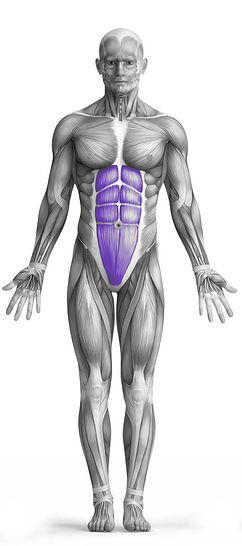Plank Leg Raise 101 Video Tutorial
0

Exercise Synopsis
Target Muscle Group
Abs
Secondary Targets
Execution
Isolation
Force Type
Core
Required Equipment
Bodyweight
Fitness Level
Intermediate
Variations
Alternatives
Timer
Hour
Minute
Second
Stopwatch
00:00:00:00
Overview
The Plank Leg Raise is a challenging bodyweight exercise that targets the abs while also engaging the glutes, hamstrings, quads, and shoulders. To perform the exercise, start in a high plank position with your hands placed shoulder-width apart and your body in a straight line. Keeping your core tight and hips stable, lift one leg towards the ceiling while maintaining the plank position. Hold the leg up for a brief moment before lowering it back down and repeating with the other leg. This exercise enhances core stability and strength while simultaneously working the lower body and shoulder muscles. It's effective for building overall core endurance and lower body strength.
How to Perform
Set Up: Begin in a high plank position with your hands placed directly under your shoulders. Ensure your body forms a straight line from your head to your heels, with your shoulders, hips, and ankles aligned.
Engage Core: Tighten your abdominal muscles to stabilize your core and prevent your hips from sagging or rising.
Lift Leg: Slowly lift your right leg off the ground, extending it towards the ceiling. Aim to raise it to about hip height, keeping your foot flexed and your leg straight.
Hold Position: Pause at the top of the movement, feeling the contraction in your abs and the engagement in your glutes, hamstrings, and quads.
Lower Leg: Gradually lower your right leg back to the starting position while maintaining a stable plank posture.
Switch Sides: Repeat the movement with your left leg, ensuring the same controlled motion and proper form.
Maintain Alignment: Throughout the exercise, keep your shoulders, hips, and ankles aligned, and continue engaging your core to maintain balance and stability.
★ Bonus: For exercises that involve external weights (such as dumbbells, barbells, or machines), the One Rep Max (1RM) calculator can help you estimate your maximum lifting capacity. Use it to track your strength progress and adjust your training for optimal results.
Tips
Breathe steadily throughout the exercise, exhaling as you lift your leg and inhaling as you lower it.
Avoid any excessive swinging or jerking motions; focus on slow, controlled lifts to maximize muscle engagement and effectiveness.
If you experience any discomfort in your lower back, check your form to ensure your core is fully engaged and your hips are properly aligned.
How Not to Perform
Avoid Sagging Hips: Do not let your hips drop towards the floor or rise too high. This misalignment can strain your lower back and reduce the effectiveness of the exercise. Keep your hips level with your shoulders throughout.
Do Not Overarch Your Back: Ensure your lower back does not arch excessively. This can lead to discomfort and potential injury. Maintain a neutral spine with your core engaged to support your back.
Do Not Swing Your Leg: Avoid using momentum or swinging your leg to lift it. Instead, focus on a controlled and deliberate movement to fully engage the target muscles, including the abs and glutes.
Avoid Overextending Your Leg: Do not lift your leg too high, which can compromise your balance and form. Aim for a height that aligns with your hip to ensure effective muscle engagement and stability.
Do Not Neglect Core Engagement: Failing to keep your abs engaged can lead to lower back strain and reduced effectiveness. Always tighten your core to maintain proper form and support.
Avoid Flared Elbows: Keep your elbows close to your body and ensure your hands are directly under your shoulders. Flared elbows can cause instability and reduce the effectiveness of the exercise.
Do Not Hold Your Breath: Breathe consistently throughout the exercise. Holding your breath can create unnecessary tension and hinder performance. Exhale as you lift your leg and inhale as you lower it.
Avoid Twisting Your Hips: Ensure that your hips remain square to the floor. Twisting can lead to improper muscle engagement and potential injury. Focus on maintaining a stable and straight plank position.
Do Not Rush the Movement: Performing the exercise too quickly can lead to poor form and decreased muscle activation. Move slowly and with control to maximize the benefits and minimize risk.
Avoid Uneven Weight Distribution: Ensure your weight is evenly distributed between your hands and feet. Shifting too much weight onto one side can affect your balance and the effectiveness of the exercise.
Variations
Variations of fitness exercises refer to different ways of performing a specific exercise or movement to target various muscle groups, intensities, or goals. These variations aim to challenge the body differently, prevent plateaus, and cater to individuals with varying fitness levels.
Alternatives
Alternative exercises in fitness refer to different movements or activities that target similar muscle groups or serve the same training purpose as the primary exercise. These alternative exercises can be used as substitutes when the original exercise is unavailable or challenging to perform due to various reasons such as equipment limitations, injuries, or personal preferences.








